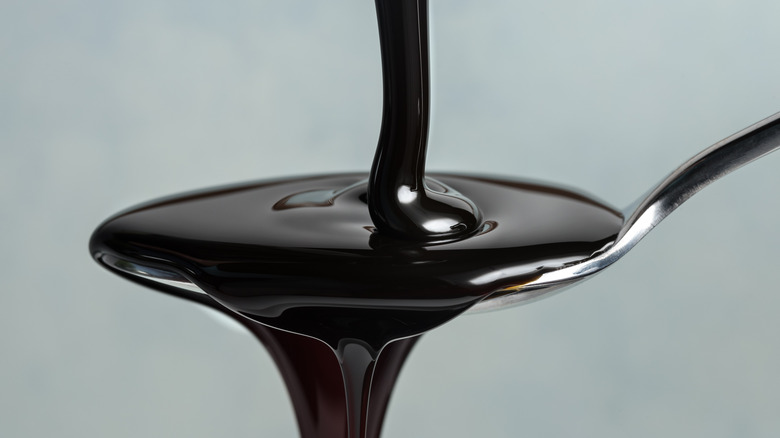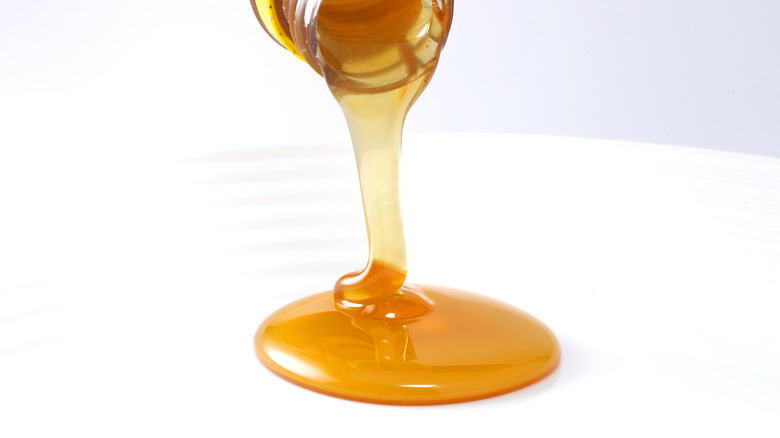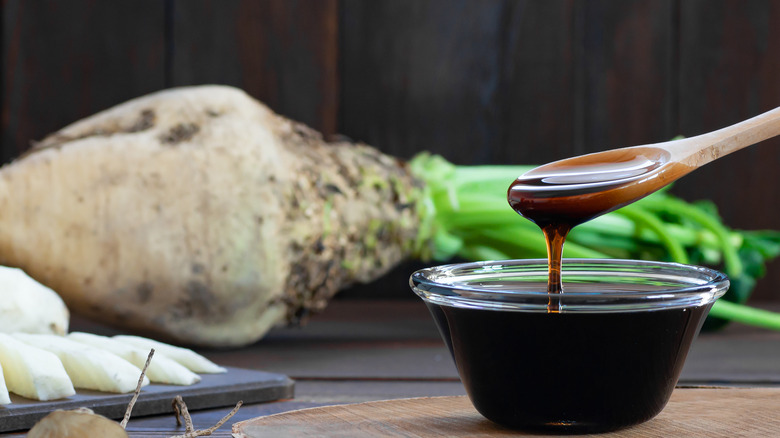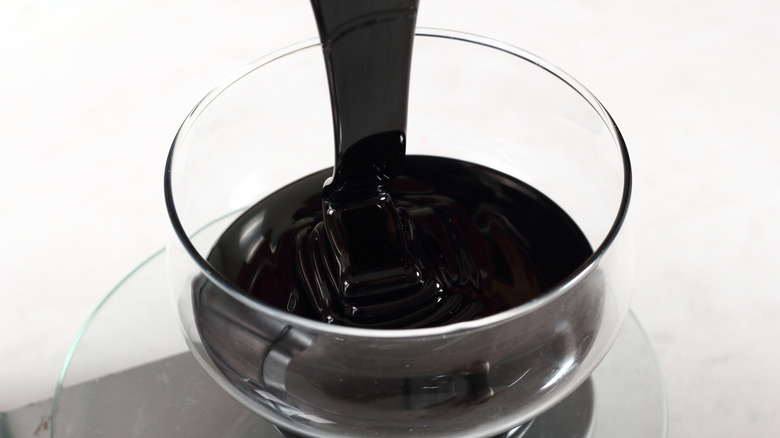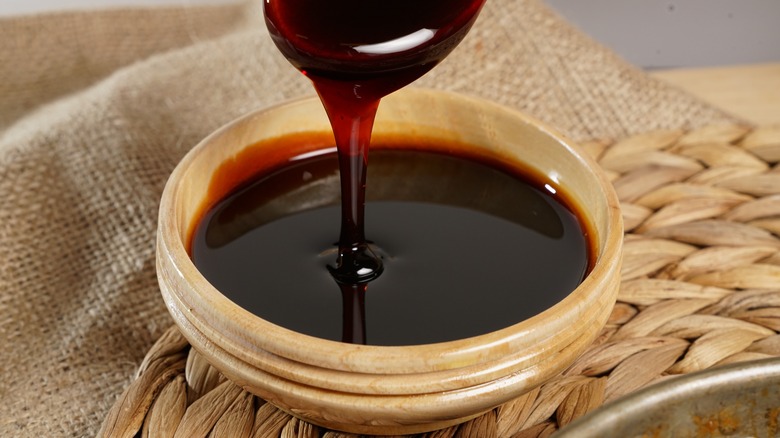What You Need To Know About The 3 Different Types Of Molasses
We probably don't take molasses into consideration as often as baking or table sugar. When it comes to baking cakes, mixing up cobblers, or making cookies most recipes call for white or brown sugar before they'll call for molasses. According to Medical News Today, molasses is a byproduct of the sugar beets and sugar cane refining process. Once the juice is extracted from these plants it is boiled down to form the crystals we consider regular sugar. Molasses is the thick syrup left over after the crystals have been removed.
This process allows molasses to retain vitamins and minerals that refined crystallized sugar doesn't contain, but according to Food Insight this thick liquid sugar is just another sweetener like agave, high fructose corn syrup, or honey. There are three distinct types of molasses used in the kitchen, all made and used in different ways and it would behoove you to learn the difference.
What is Light Molasses?
Light molasses may be the syrup you are most familiar with and — like all of its relatives — it can be made using either sulfured or un-sulphured sugar cane. Glory Bee says un-sulphured sugar cane means that the plant has naturally ripened in the field, whereas unripened sugar cane has sulfur dioxide added to it after it has been harvested, for preservation purposes.
The different kinds of molasses are determined by how many times they've gone through the boiling process. Light molasses, or Barbados molasses, is a product of the first boiling. The Spruce Eats describes it as the "lightest and sweetest" of all molasses due to the small amount of sugar that has been removed through the boiling process. It is also brighter in color, unlike other molasses types which are boiled more than once producing a darker and thicker substance. Light molasses can be used as a delicious syrup for your breakfasts or desserts because it still retains most of the sugar from the cane.
What is Dark Molasses?
If you find your love of molasses extending past a general need for syrup, the next step would be to use it in a recipe like gingerbread. Molasses adds a unique quality to any baking recipe by providing darker flavors, chewier textures, and a gorgeous brown color. But, you don't want to reach for light molasses when whipping up these sweet treats, according to Kitchn. Instead, you should go to the supermarket and pick up some dark molasses.
Dark molasses is the product of light molasses being boiled for a second time, transforming the syrup into something heavier, thicker, and richer with a touch of bitterness, due to a further reduction of the sugar content (via Taste of Home). It still tastes sweet, just not as sugary as light molasses and you can even use it as a secret ingredient to heighten the flavor of your baked beans.
What is Blackstrap Molasses?
Blackstrap molasses is on a completely different level compared with light molasses or dark molasses. Don't go picking a jar of this stuff unless you know what you are getting yourself into. Notorious for its extremely thick, dark, and bitter nature, Southern Living warns that, although blackstrap has a few more health benefits than other molasses, you should never use it for sweet dishes.
Blackstrap molasses is the darkest and bitterest kind of molasses and comes from the third boiling of the leftover cane sugar to extract the remaining crystals (via How Stuff Works). It is mostly full of iron, potassium, and antioxidants, as listed by Healthline. It's also super concentrated and is sometimes taken as a nutritional supplement to help those with anemia, constipation, bone and hair problems, or as a home remedy for premenstrual syndrome (PMS) symptoms.
How to swap them in recipes
The more you boil molasses down the more concentrated and less sugary the syrup becomes. Because of this, light molasses, dark molasses, and blackstrap molasses all have different textures and flavor profiles. However, The Spruce Eats asserts that because light molasses and dark molasses both have residual sugar left in them, you could use dark molasses as a heavy syrup, just know that it tends to be darker and has a soft bitter note to it. And, be aware that if you choose to substitute light molasses in a baking recipe for dark molasses, recognize that there is more sugar in light molasses so you'll need to adjust how much sugar you add to the bake. Try taste testing your concoction as you add the sugar and molasses to make sure you don't over-sweeten.
So, while the two lighter-style molasses are somewhat interchangeable you must never use blackstrap molasses in your sweet bakes. Blackstrap is extremely dark, impossibly thick, bitter, and will corrupt nearly anything you put it in with its overwhelming flavor. It should be mentioned that blackstrap molasses is often used in farm animal feed (per Southern Living)!
